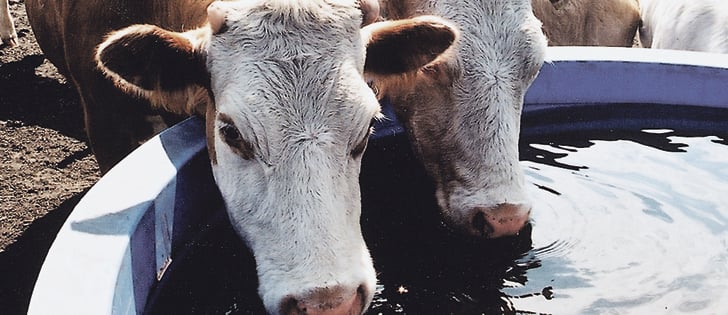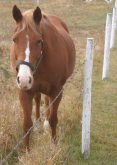If you lead or direct a cow to clean water, it will usually drink faster and grow better.
The best way to make that happen is with an off-site system like a water trough, say experts.
“When given a choice, cattle will drink from a trough eight times out of 10, even if they have access to surface water,” according to information on the Cows and Fish website, managed by the Alberta Riparian Habitat Management Society.
Lorne Fitch, provincial riparian specialist with the society, said water is one of the most important nutrients for cattle, a fact many producers overlook.
Read Also

Beef check-off collection system aligns across the country
A single and aligned check-off collection system based on where producers live makes the system equal said Chad Ross, Saskatchewan Cattle Association chair.
“Water is perhaps not given the priority it should be given. Obviously, forage resources and the ability to balance the landscape and what it grows with grazing and leaving enough behind to ensure that things like nutrient recycling and moisture retention and erosion prevention are happening is crucial.
“But it’s also that balance between forage consumed and how much water is required in the digestive process,” he said.
Gerald Vandervalk ranches with his family near Claresholm, Alta. They were awarded the 2016 Environmental Stewardship Award from Alberta Beef Producers.
Vandervalk thinks water quality is becoming more top of mind for many producers for two reasons: better cattle health and improved conservation.
He said a local co-operative-owned herd of 800 heifers has seen major improvement after the recent installation of a gravity-fed off-site water system.
“The health of the herd as far as treated animals has drastically changed: everything from foot rot to just sickness,” he said.
“On a year like last year where it was so dry that these water storage areas were so low, that if the cows had access it would have been a mess. One cow goes in to take a drink and another one goes a little farther in and the next thing is they’re walking out to the middle and then the whole thing is a big mud hole.”
Fitch said a cow eats about 12 kilograms of dry forage a day and requires 40 to 60 litres of water to digest that forage.
While water quantity directly affects livestock performance, quality of water is perhaps even more important.
Fitch said livestock prefer to drink clean water and quality should be a prime driver behind livestock productivity.
Several research studies by Agriculture Canada suggest cattle gain more weight when clean water is available to them in a trough system compared to watering directly from a pond or dugout.
“In other words they’re putting on more beef and that translates into more money,” Fitch said.
Cattle that drink clean water spend more time grazing and ingest more forage.
“If you watch livestock, particularly if they’re drinking out of surface sources that are muddy or permeated with urine and feces, it takes them a long time to drink because I don’t think they sense that it is very potable,” said Fitch.
“They know they have to drink but they don’t want to, so they spend a long time in the process. Of course the longer they spend drinking, the less time they spend grazing.”
According to Cows and Fish, yearlings could have a 23 percent weight gain using clean water in a trough system compared with direct access to dugouts or ponds. Pumping water to a trough from a dugout produced three percent greater weight gains because water quality does not change much.
While he said it has never been tested, Fitch believes cattle preference for troughs is a combination of water quality and location.
“It could be that a trough situation provides them better footing. They don’t have to slog through mud, as an example. And it could be something about the genetics where if you’re in a stream with your head down, you’re subject to more predation,” he said.
“I suspect there are some wild remnants in cattle that still dictate a safer place to drink is the one that will be chosen. If you’re up at a trough, your head is up and you can scan the landscape.”
A key advantage of pumping clean water away from the source is protection of riparian areas.
“Often it’s the place where the shade is and sometimes the lushest forage. As a consequence, cattle tend to hang out in riparian areas too long, overuse them and that’s when riparian areas and many of their key ecological functions and benefits start to deteriorate,” he said.
Key ecological functions include erosion prevention, allowing water to seep into groundwater for future use, dealing with overland flow, forage production and biodiversity.
“About 85 percent of our fish and wildlife species depend in whole or in part on that little piece of the landscape called riparian,” Fitch said.
“So it fulfills a whole bunch of functions that we may not realize and dealing with cattle distribution through off-stream water development is really one of the fundamental ways of ensuring that we can protect those ecological functions.”
Changing livestock distribution will improve the vegetation in the riparian fringe, which is where most filtering takes place.
Vandervalk saw this first-hand when he fenced off areas of dammed coulees where his cattle used to drink.
“I just look at the banks around the dams, and vegetation is starting to grow and come back. They look like little wildlife preserves.”
However, he said there are advantages to riparian areas if cattle have short-term access.
“It’s been shown if you don’t do any grazing, the varieties of grass that end up there … weeds like Canada thistle start coming in. I think the grass needs to be grazed just to keep it growing and healthy and all the old plant material taken down,” he said.
“So when the cows are only in there two days at a time, you really can’t see any damage to the creek banks.”
Water facts
Livestock behaviour research in the Kamloops, B.C., area studied how water influences cattle behaviour.
- Proximity to water is the most important factor determining where livestock are distributed. This means water is the most effective tool at manipulating livestock behaviour. Although cattle will travel three to four kilometres for water, it is recommended that they have water within 1.5 km in gentle terrain and less in steeper terrain. In general, studies have shown that cattle tend to spend most of their time within about 300 metres of water. (DelCurto et al. 1999)
- The amount of time cattle spend drinking depends on water source, water quality, taste and weather. Time spent drinking can vary from three to six minutes per day
to 26 minutes per day. (Veira, D. and Liggins, L. 2002) - The water requirements of cattle vary with weather conditions and the physiological state of the animal.
Source: Kelsey Spicer-Rawe, riparian specialist with Cows and Fish


















